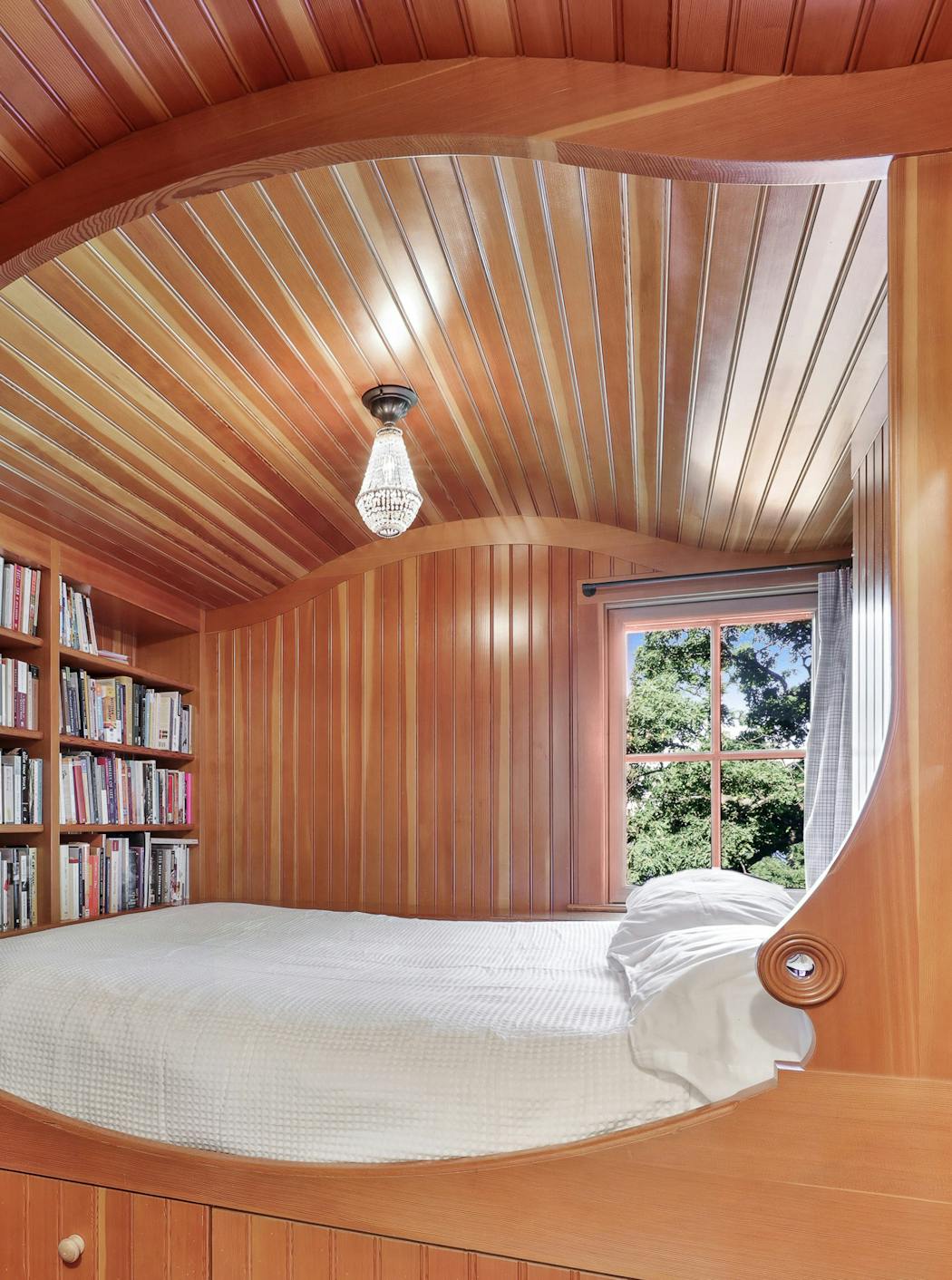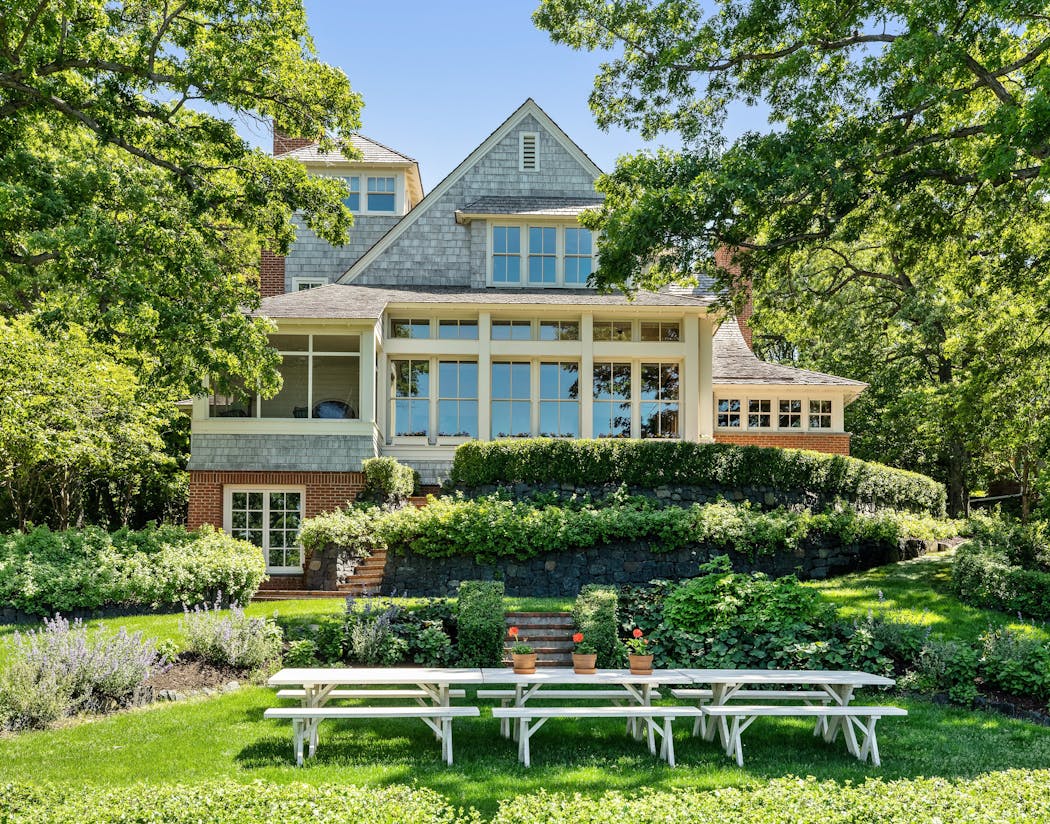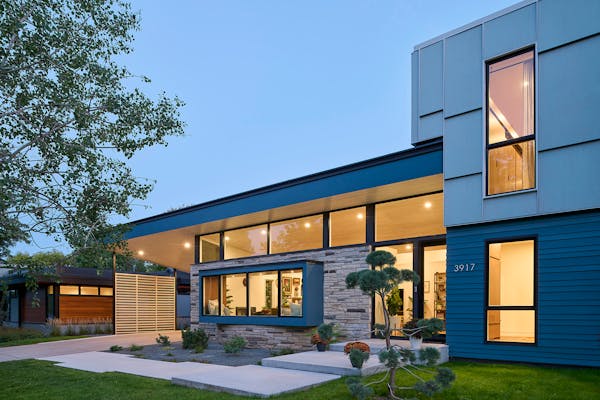Dale Mulfinger, co-founder of Twin Cities-based SALA Architects, is a go-to guy for getaway homes and has written several books on the topic, earning him the nickname the "cabinologist." He's also the mastermind behind the local Home of the Month (HOTM), a popular residential design competition that just celebrated its 20th anniversary.
A collaboration between the Star Tribune and Minnesota chapter of the American Institute of Architects (AIA), the juried competition has attracted more than a thousand entries over the years, but only 12 winners get published in the Star Tribune each year.
As the program has evolved over the years, a live event invites the public — from those who love design to others considering their own home projects — for an up-close and personal look. This year's program, slated for May 1 at Minneapolis' Glass House, will offer a chance to ask questions via one-on-one architect/homeowner consultations and an audience question and answer session following a panel in which designers and homeowners give a peek inside three top local residential design projects.
In one project, an accessory dwelling unit (ADU) accomplishes a homeowner's vision for adding a small-scale residential structure on her Minneapolis property. In another, a St. Paul remodeling and addition of a late-1930s Lake Como home seamlessly blends the old with the new while connecting the homeowners to their love of gardening. Meanwhile, an architect's DIY house in North Oaks, complete with a green roof sedum garden, also offers plenty of sustainable as well as contemporary design inspiration.
Ahead of the next HOTM event, in which the next round of winners will also be announced, Mulfinger and others take a look back as well as talk about the changing landscape of home design.
The program's first winner — a new house in Mahtomedi designed for empty nesters on a lakeside lot — landed on the front page of the Star Tribune Homes section in May 2003. Leffert Tigelaar, who designed the house with fellow architect Tom Ellison, said the program has helped show that good design is affordable and attainable, no matter the size of the project. It's also helped give residential architects a voice.
"For an architect, it's definitely a feather in our caps," he said.
Tigelaar, a longtime partner with TEA2 Architects in Minneapolis, which has had nearly two dozen HOTM winners over the years, said the program has also helped inspire an untold number of homeowners to seek professional design advice.
"Design really changes the way you perceive the environment, so that has value," he said.
The clients who commissioned that house in Mahtomedi recently sold it. Brigg Backer, the agent who listed it, said he displayed the article, which prominently featured the cottage-style abode on the cover of the Homes section, while showing the house to prospective buyers.
"It didn't hurt [to help market the house]," Backer said. "I feel there aren't any homes on White Bear Lake with that kind of architectural design and that's what we sold it on."
After two decades of submitting projects on behalf of the firm — and winning dozens of times — here's what Mulfinger had to say about the program and the changing nature of home design.
Q: How did the program start?
A: There was a similar program in Seattle. I was brought out there to be a reviewer on an AIA panel. They had a home of the month program with the newspaper and I thought "What would it take to organize it, and would the Star Tribune be willing?"
Q: Why was it important to spotlight residential architecture in such a way?
A: Not all residential architects wanted to be a part of AIA. Some weren't group-oriented. At the time, the AIA wasn't over-friendly to residential architects; it was very much dominated by commercial and industrial architects.
Q: How has design changed over the past two decades?
A: There was more focus on traditional architecture back then. The Cape Cod was still in style back then, and the cottage style and the farmhouse style. There is certainly more interest in contemporary design today than there was 20 years ago.
I'm not a sociologist, but I look to my daughters and look to their generation to give me clues. I think [modern design] represents a little bit younger generation — a notion of tomorrow, a notion of freshness. And we often rebel against the style of house our parents had.
Q: Are specific features more popular today?
A: There's a desire for light and views, so there's more glass and more windows.
Q: Are higher construction costs today a factor?
A: Modern architecture doesn't necessarily cost more or less, but it might appear that it should cost less. Lower-maintenance materials are probably preferred by most contemporary clients. They don't want to paint their house or clean the gutters, so they want materials that are relatively maintenance-free.
Q: What about decor?
A: We did a lot of houses in the gray/white theme; now there are a lot more houses in the black/gray color theme. Even in our cabin work that I do, a lot of dark colors are in favor. When I started [designing getaway houses] everyone wanted wood and cedar. That's less prevalent today because they don't have to be restained every five years.
Q: Is there a HOTM winner that stands out?
A: Recently, it was the yellow ADU by Strom Architects that was a Home of the Month winner from this past year. ADUs are such a smart way to affect urban density. And our cities need more color!
IF YOU GO
The Home of the Month program will feature a panel discussion of top residential designs with architects and homeowners, followed by a Q&A and awards ceremony in which 2024-2025 Home of the Month winners will be announced. One-on-one architect/homeowner consultations also available (registration required, additional $35). The venue near the Minneapolis Farmers Market is also home to glass-blown light fixture artisans Hennepin Made, which will offer demos.
When: May 1.
Time: 5:30 p.m. social hour and Hennepin Made glassblowing demos (first come, first serve); 6:30 p.m. panel, Q&A and awards.
Where: Glass House, 145 N. Holden St., Mpls.
Cost: $15 advance; $20 at the door.
To register and more info: aia-mn.org/event/hotm-2024

The 5 best things our food writers ate this week

A Minnesota field guide to snow shovels: Which one's best?

Summer Camp Guide: Find your best ones here

Lowertown St. Paul losing another restaurant as Dark Horse announces closing




